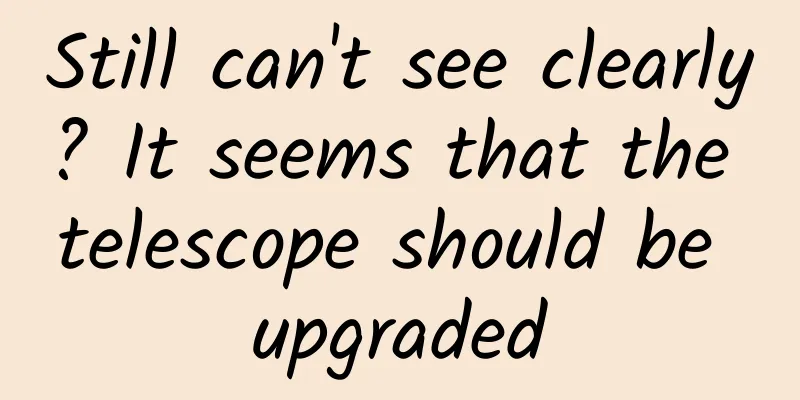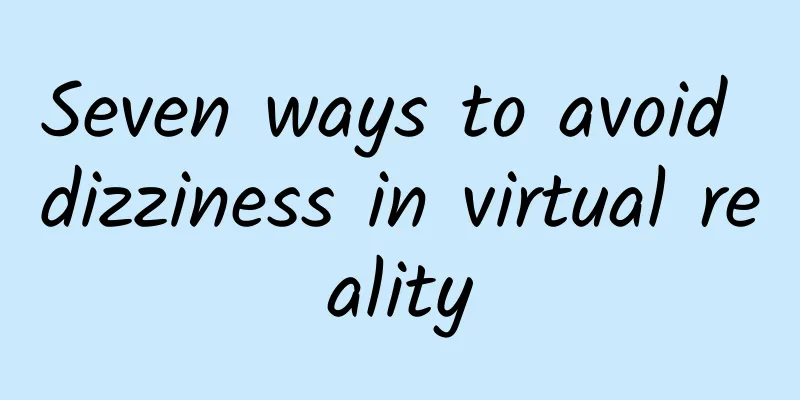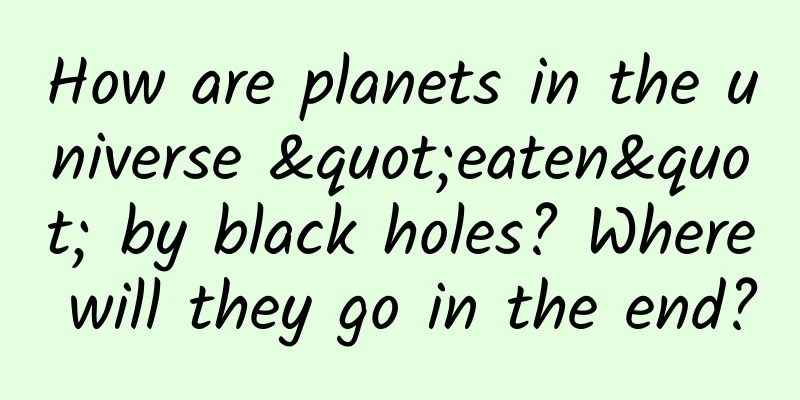Tencent practical case! How did you redesign the QQ online status after more than ten years?

|
"Ahem, ahem" - old QQ users must be familiar with this sound effect. The QQ "online status" function behind this sound effect was once the daily standard for all netizens to surf the Internet. However, this function, which was born and bred in the PC era, was not suitable for the mobile era and was almost banished to the cold palace. After being hidden for many years, in 2019, QQ8.0 launched a series of revisions to the "online status". Within a year, the online status heated up at the speed of light, and the business was booming, gaining a good reputation among many young people. So, how can a function that almost became the tears of the times find its own position in the new era and regain its vitality? Let us travel through the timeline and find out. Encountering a dilemma: not adapting to the mobile eraIn 2013, the mobile era quietly arrived, and QQ mobile was also making great strides. However, online states such as "online" and "invisible" that were engraved with the DNA of the PC era were cancelled because they did not conform to the product positioning of mobile QQ of "always online" and "available for communication at any time". Unexpectedly, the forward-looking product strategy was not grounded when it was implemented. Users who were already accustomed to the online status could not accept such a change and issued a one-star warning. In order to calm the public anger, the online status had to be retained. The user habits and cognition cultivated over the past decade are indeed not easy to overturn, but is the online status only able to be enforced in this way? What value can this function bring to users? Where will it go in the future? Reinterpretation: Finding a new niche for evolutionThe story began in the autumn of 2019. With the design concept of "vitality" proposed in the QQ 8.0 revision, the product design team launched a new attempt around the proposition of "how to make the online status more vibrant and energetic" - "online status" is certainly a product of the PC era, so can it collide with new environments and new needs in the new era to create different possibilities and bring more vitality? We go back to our roots and explore the possibilities of online presence. 1. Digging into the essence: Online status is a real-time personal dynamicWhat is the role of online status? In the PC era, "online" and "offline" are actually real-time social signal lights, clearly telling friends whether they can be contacted at this time. It is like the business signs hanging on the doors of shops in the streets and alleys in daily life, which tell customers whether the shop is "open" in a small and clear way. In the PC era, the signal lights of "online" and "offline" were important because the friend's account status indicated whether the most basic social behaviors such as chat interaction could get a timely response. Back to the mobile era, contacting friends anywhere has become as natural as breathing. Whether a social interaction can get a response depends more on the other party's current situation, such as whether the friend is busy, in a bad mood, or has asked for leave, etc. Therefore, in the mobile era, only real-time updates and rich and three-dimensional status communication can eliminate the uncertainty of friends' situations during chats and reduce the information gap during communication in this social environment with high-speed information flow. These states may include subjective psychology or objective situations. The evolution of online status in mobile scenarios should be a more real-time update and personal dynamics that fits life scenarios. But the problem is that expressing personal real-time dynamics is actually what users have always wanted in social scenarios, and the platform has already had corresponding functions, such as publishing personalized signatures and writing comments. So how can the new version of online status be differentiated to better meet user needs? 2. Raise your perspective: build an analytical framework and find the right nicheWhether it is a signature, a post or a status, it is actually the content published by the user. From the two dimensions of content creation cost and content real-time, we can make a clear stratification of existing capabilities - the posts and signatures mentioned above both rely on custom uploaded content and have a high editing threshold. This method can show as many unique ideas of users as possible, but it is also difficult to be compatible with lightweight and instant expression demands. Therefore, in such a content ecosystem, there is a gap that needs to be filled - a lightweight, instant, personal real-time dynamic that assists in chat scenarios. And the online status, with its natural signal light properties, can just fill this gap. As a result, the online status has roughly figured out its own ecological niche - based on the user's cognition and operating habits of the online status, it has expanded more real-time, rich, and life-scenario-oriented options and capabilities, allowing users to send social signals more conveniently and quickly, adding more fun to the chat or expanding a new way of information transmission. So, how do we go from idea to implementation? Content design: Evolution from single point to multi-dimensionalHaving experienced failures before, we naturally dare not make drastic changes right from the start. The series of online status revisions since 2019 is actually a process of crossing the river by feeling the stones. With continuous small-step verification, the situation has changed from chaos and uncertainty to gradually becoming clear and visible. The content design of online status has also gradually evolved from cautious and single static content to richer and more intelligent dynamic content. 1. Single point trial: Expand the online status of daily lifeAny attempt cannot be separated from real scenes, and the revision of online status is also the same. Focusing on what kind of social situation clues users need, we began to play the role of an ordinary female/male junior high school student. Think about in daily life, under what circumstances may you not contact your bestie or best friend even if they are online - maybe they are working hard on their homework and have no time to check their phone, maybe they are happily watching a sweet drama and eating CP, or maybe their phone is running out of power and they hurriedly turn on the power saving mode... So we started with offline daily activities and launched a series of online status collections for daily life: "Studying", "Gaming", "Fitness", "Watching TV series", "Sleeping", and expanded to more abundant device statuses such as "My battery" and "Weak signal" - these ordinary daily activities consisting of eating, drinking, defecating and urinating are not the most real daily life, right? These states, from offline to online, cover more possibilities in a wider range, providing real-life scene clues for the chat and interaction of the majority of "live" young people. After a bold revision and renovation, the first batch of revised online status officially went into the market for trial! What is gratifying is that the new version of the online status not only did not fail, but also received a large number of positive comments from users, and the daily status switching volume increased rapidly. 2. Continuous operation: Synchronize life timeline and major eventsAfter the first revision, we continued to move forward along the line of thought of “personal real-time status”, allowing the online status to reflect the rapid changes in the three-dimensional world, making the status more real and vivid. Therefore, during major events and festivals, the online status also continues to operate, maintaining a seamless connection with the real-life timeline: during the 2020 epidemic, the online status was combined with scenarios to launch new statuses such as "online learning", "remote work", and "TiMi in progress" to meet users' needs to express social signals while staying at home to fight the epidemic; during special holidays, such as the launch of "In love" and "Woof woof woof" on the eve of Chinese Valentine's Day, and "Meeting Spring" on Arbor Day; during traditional festivals, the online status will not only launch new statuses such as "Celebrating the Double Festivals" and "Greeting the New Year", but will also call for "staying at home for the holidays" and "Celebrating the New Year on the spot" with great awareness of epidemic prevention... This type of status always sparks a wave of discussion during the holidays, helping users convey the social signals that need to be expressed most. 3. Intelligent real-time: Connect with various contents, more rich and flexibleAs the number of online statuses increases, we find that those that can be changed in real time are more popular and generate more topics, such as the real-time updated "My Battery Level": So we followed this idea, leveraged the capabilities of the platform ecosystem, and connected with QQ Music to launch the "Listening to Songs" online activity status. When switched to the "Listening to Songs" status, users can scroll the song title, singer, and lyrics simultaneously, whether in QQ Music or QQ "Listen Together". This not only helps you show your unique musical taste in every move, but also the potential topics behind the songs can help broaden the topic pool. As the new attempt of online status has received good user feedback, we have also connected it with the mini-programs such as constellations and weather, and updated the user's constellation fortune and the weather conditions of the location every day. In addition, the online status can intelligently identify the user's location and activities based on the user's geographical location changes, making the online status closer to the user's life context and adding a touch of geek style to the online status. Fine polishing: ingenuity beyond expressionFrom this perspective, is it safer to continue to expand online presence with good content? Not really. Online presence is a window for young people to convey their social situation. If they want to gain their recognition and favor from a psychological level, their expression methods and techniques should be in the same cultural context as the new generation. From the perspective of the platform, we cannot simply cater to the tastes of young people, but we hope to guide positive topic discussions and allow online status to continue to change and develop in a healthy and thriving way. Therefore, we need to consider the demands of both users and platforms to create content. 1. Status Icon: Please taste it carefullyThis generation of young people do not like serious endorsements and are opposed to bland and boring descriptions. They are gradually immersed in a rich and entertaining environment. They love to savor everything and can play with memes everywhere. Their passive skill is to have enough inner drama. They are born with abundant imagination and interpretation ability. In a word, it is "fun". Therefore, the online status also painstakingly uses various techniques to polish icons and copywriting, leaving room for imagination through more metaphorical expressions. Take the expression "I'm fine" to express anger as an example. The initial setting was originally "angry". But do young people of this generation really like to express anger in social situations? In addition to venting emotions, they also need comfort and understanding. Therefore, the optimized "I'm fine" expresses that a smile can contain complex emotions such as anger, grievance, or sadness. Users can associate it with recent events of their friends and fully interpret the emotions based on their own understanding. In addition, our other mood states are also combined with scenes to create a sense of story: "Leisurely" is at the beach in the summer sun, sipping a mouthful of coconut juice, feeling satisfied; "Wanting to be quiet" seems to be in a bad mood, and in order not to be disturbed, he secretly locks himself in ice; "Happy" has just been confessed to, his heart is beating fast, and his smile is sweeter than a peach... 2. Status copy: Young style, leading to positive topicsIn addition to icons, whether there is a common language with young people also depends on whether the copy can be on the same channel. Taking Valentine's Day status as an example, we hope that in addition to the "in love" status, thousands of single people can also find teammates to keep warm together, so we plan to launch a single status (dog head to save life). However, the copy did not use the straightforward "single", but instead used the "woof woof woof" tone to describe the concept, which made it vague, but the room for interpretation became larger - single people can use it to seek resonance, and those who are no longer single can use it to show off their love (dangerous actions, please do not imitate). In addition, the online status copywriting should also pay attention to positive guidance. In the content control of the horoscope, we blocked some non-positive or ambiguous corpora, and tried to link them with chat or daily life scenes as much as possible. We are also very happy to see that the screening and control of the content library can indeed arouse users to discuss more about the beautiful things in life. Framework adjustment: the way to upgrade containersAs the number of online statuses and gameplays gradually increased, the lack of scalability of the original interface framework became increasingly apparent. Every new and completely different gameplay would increase the complexity and bloat of the interface, further increasing the user's cognitive load. Therefore, we must establish a more inclusive interaction framework. Under this framework:
1. Create cognition: rich and funThe original setting entrance of online status is extremely hidden, and can only be entered by long pressing the avatar or accurately clicking the icon. With the expansion of status content, in order to create a rich and fun perception of online status, the entrance design has become more explicit and dynamic, and the specific content can be transmitted in real time. In addition, the previous settings interface had many limitations: in terms of space, the half-screen floating layer seemed increasingly cramped; in terms of operation, the capsule-shaped flat display method could not carry more operations; in terms of expression, the interactive controls had different shapes and were slightly complicated. The reprint adopts a window-style display method to unify and organize the operable elements, and use more ample space to carry clear and operable controls. 2. Simplified operation: lightweight and convenientThe positioning of online status is to convey status more immediately, so we naturally do not want users to have too many barriers in setting the path. In the new solution, the hierarchy is as flat as possible, and users basically do not need to enter the secondary page. The setting click operation takes effect immediately, creating a flexible and free way of entry and exit. 3. Framework rules: inclusive and expandableAmong the newly added status types, some special statuses that change in real time require secondary pages to be carried when setting. In the past, secondary pages were basically solved by popping up new pages, which was relatively heavy for users and caused a sense of disconnection in the operation that should have been light. In the new framework, clicking on the square entrance can expand it into a large panel based on the original position, so that the secondary operation does not deviate from the context, and users can freely and flexibly enter and exit the settings. Based on such a framework, we can smoothly embed more intelligent and real-time advanced capabilities into the framework and ensure the stability and unity of the framework, allowing users to cultivate solid cognitive and operational habits. Since then, the journey of exploring the vitality of QQ online status, which began at the end of 2019, has been iterating from product positioning, content expansion to framework structure, and this journey is also under continuous exploration. From the initial incompatibility on the mobile side to the rapid increase in usage after the revision, this process is a continuous observation and deliberation of user demands, as well as a continuous exploration of functional scenarios. However, no matter how the function is iterated, the online status will be actively integrated into the cultural context of young people, helping users to show richer and more multi-dimensional social situations in a more intimate and fun manner. ConclusionEight years ago, in an online report, a commentator lamented the cancellation of QQ's online status, "It is a long and painful process for QQ to destroy the user habits and cognition that it has built up over the past decade. As for whether it is right or wrong, it may still be impossible to judge at present." Eight years later, perhaps we have a preliminary answer - we are not limited to To Be or Not To Be, we can expand more third options by changing our thinking. Does "online status" necessarily mean "online" or "offline" of the device account? When we regard the "online status" solution as a black box, we can see that its output is a series of capability attributes such as "assisting in social chatting", "related to the situation", and "changing with time". If we reversely deconstruct it from the attribute level, we can break through the old thinking paradigm of "device status" and give new meaning and association to this "black box". In the future, QQ online status will evolve in a more vibrant and lively way, making QQ more fun and considerate. |
<<: Google Android 12 Developer Preview Beta 3 gets minor changes to the notification center
>>: Apple iOS 14.6 Beta 1 experience: 1 new feature added, battery life consumption increased
Recommend
NSTimer in iOS
[[139776]] When I was organizing the company'...
The most complete guide to improving user retention!
How to improve user retention? 1. The value of us...
"Chinese Tales" goes viral! Let's take a look at the little-known facts in Langlang Mountain
Coinciding with the 2023 New Year's Day holid...
Tips on how to place ads in game information streams!
1. Go Online 1. Pay close attention during the la...
After recovering from Mycoplasma pneumoniae infection, can you get infected again? Under what circumstances can children go back to school after being infected?
Autumn is the peak season for Mycoplasma pneumoni...
How long should an App Store app name be? 23 characters or less is best!
Recently, Apple officially sent an email to devel...
The universal formula for e-commerce operations!
Recently I have been sorting out the e-commerce p...
BAT all want to make mobile phones, but I still choose Apple
Tencent's own ROM system has gone from being ...
Which ocean satellites has my country independently developed?
my country has always attached great importance t...
Tool APP advertising monetization optimization plan and operation skills
In addition to giants such as WeChat, Taobao, and...
3000 words in-depth explanation of bidding promotion sorting rules!
People in the industry all know something about t...
The noise is too loud~How to reduce noise with headphones? Are noise-cancelling headphones good?
The symphony of the city is not always pleasant t...
Go Hack 2017 registration is open: a Go language brain-burning battle in Shanghai in October
Donald Knuth said in his speech when he received ...
The best pickup truck under 200,000 yuan, no doubt about it, the world's first super extended-range pickup truck Changan Hunter is officially launched
On March 1, Changan Hunter reached a milestone mo...
Campus promotion costs and marketing promotion suggestions
1. How much does it cost for a company to promote...






![Mirei human body sketching course [general quality with brushes]](/upload/images/67cc0bfaae457.webp)


